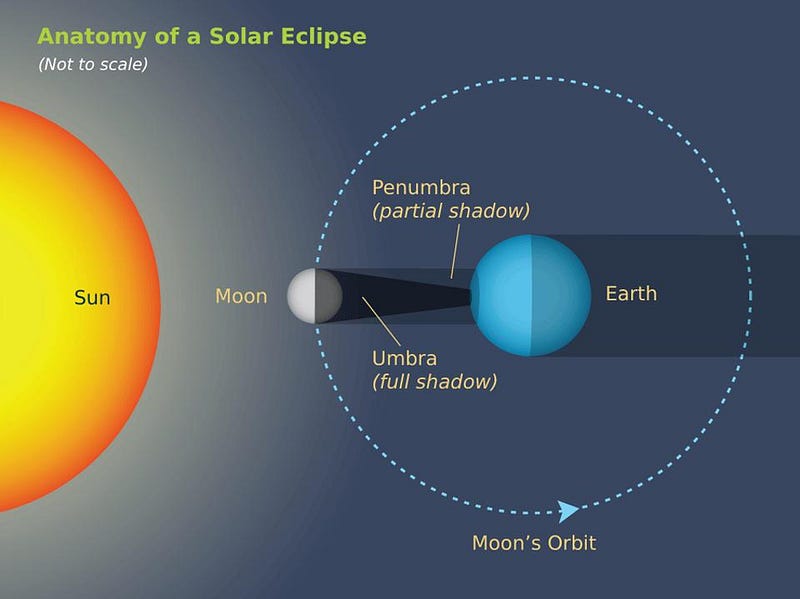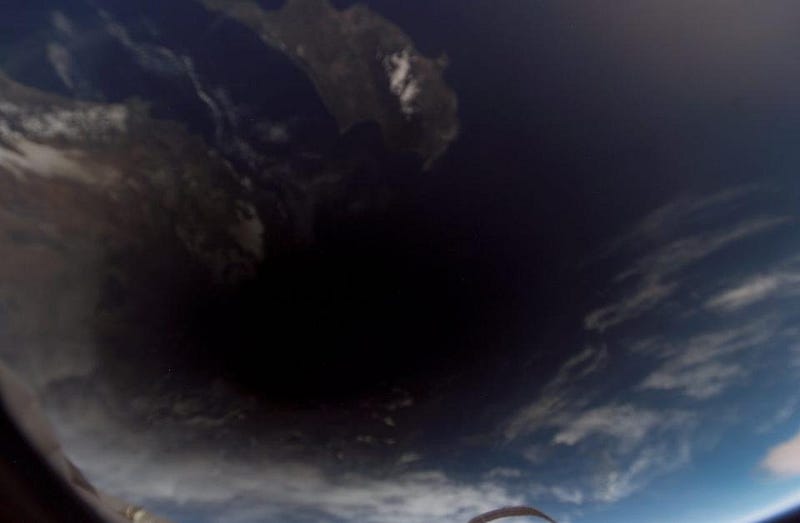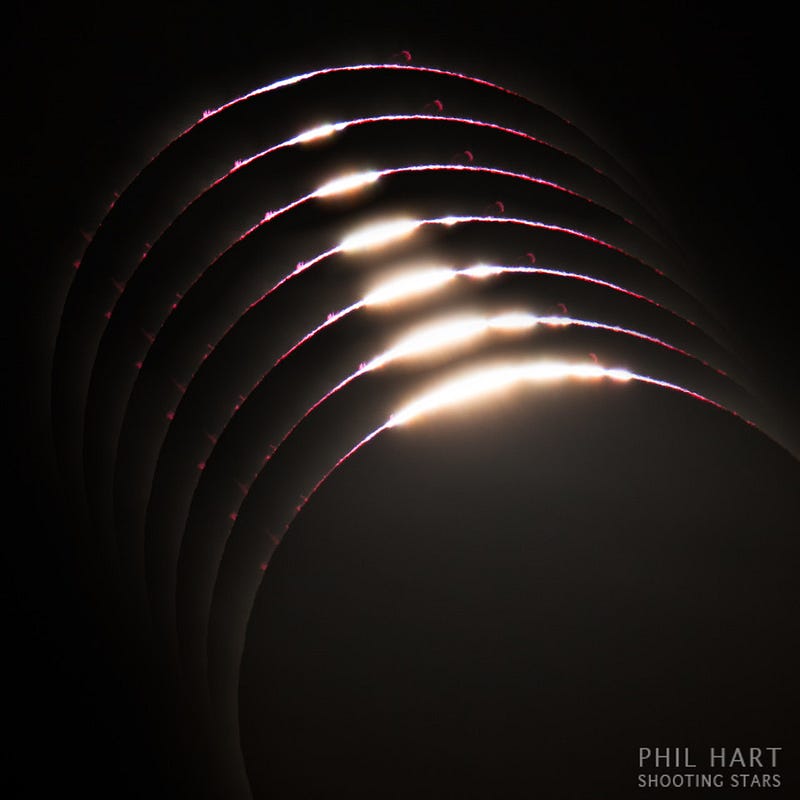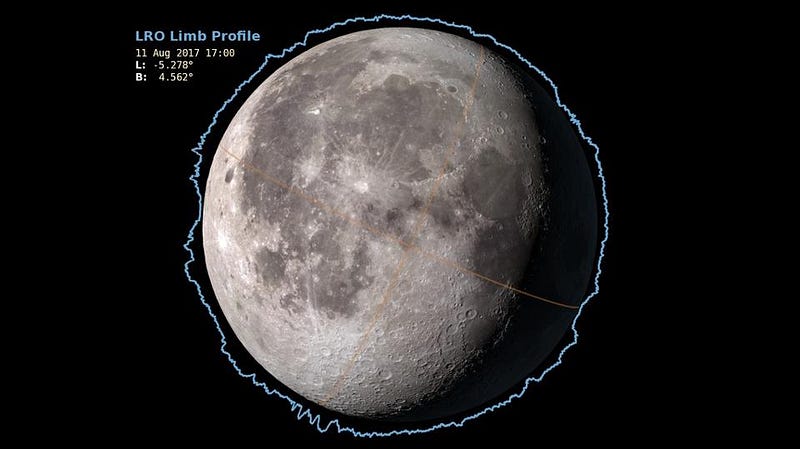The strangest eclipse fact of all: the Moon’s shadow isn’t a circle

Sometimes science is stranger than fiction.
“To morrow, I believe, is to be an eclipse of the sun, and I think it perfectly meet and proper that the sun in the heavens, and the glory of the Republic should both go into obscurity and darkness together.” –Benjamin F. Wade
The Earth is nearly a perfect circle, and when the Sun strikes it, it casts a shadow. That circle, during a perfect alignment between the Earth, Sun and Moon, is visible on the lunar surface, and what we see lines up exactly with what we expect: a near-perfect circle. The Moon, too, is nearly a perfect circle. Whether you see it lit up during a full Moon, the faint outline from earthshine during a crescent phase or are viewing it silhouetted against the Sun during a solar eclipse, it, too, appears circular. But if you were to view the shadow the Moon makes on Earth during this time, not only wouldn’t it be circular, but three combining factors mean that it’s not even close.

There’s a grand illusion you see if you look at Earth from space: it looks like you’re watching a circular planet. But that’s a trick of perspective, because the Earth is actually a sphere. Even if you were to project a perfectly circular shadow onto a spherical surface, the shape it made on that surface wouldn’t be circular, but elongated into an ellipse instead. The closer you are to the edge of the Earth — both at the start and end of the eclipse as well as when eclipses occur at higher latitudes — the more elliptical your shadow gets.

But the Moon’s shadow isn’t a perfect ellipse, either. If you’ve ever looked at the Moon through a telescope, or simply observed some higher-resolution pictures like those from NASA, you’ve probably noticed that the Moon is full of craters. Unlike Earth or Mars, where craters are worn down by erosion, where the winds blow and dunes are created and recreated, and where sharp features are smoothed out over geological timescales, the Moon remains as-is from one cosmic impact to the next. If you were to look carefully at the edge of the Moon, you’d find it didn’t have a smooth, curved edge after all.

The easiest way to see this is during a solar eclipse, when the Moon passes in front of the Sun. With high-resolution imaging, you can clearly see the shadows, but there’s a particular time that you can see an incredible effect with nothing more than a pair of eclipse glasses or welder’s shades. During a total solar eclipse, either right before or right after totality, the Moon’s disk nearly — but not entirely — blots out the Sun. Just when the Moon’s limb nearly entirely covers the Sun, the depressions where the craters occur allow sunlight to peek through, creating an optical phenomenon known as Baily’s beads.

These imperfections along the edge of the lunar limb don’t just reflect peaks and valleys on the Moon’s surface, but result in sharp edges and corners appearing on the Moon’s shadow as well. Thanks to incredibly accurate mapping of elevation of the entire lunar surface by NASA’s Lunar Reconnaissance Orbiter, we know exactly what the profile of the Moon looks like. Combine that information with the Earth-Moon-Sun orbit, and we can derive what irregularities will be present during the August 21st, 2017 (or any) solar eclipse, when the Moon’s shadow passes across Earth’s surface.

But there’s one additional factor at play that we can’t ignore if we want to get the shape exactly right: the elevation of the Earth. Because the Moon is a finite distance away from the Earth, an altitude difference of even a few hundred feet between locations will alter the shape of the Moon’s shadow significantly. Given that many mountain ranges change elevation by over 10,000 feet, it’s imperative to include this effect as well. Add all three effects together, and you’ll see the true shape of the Moon’s umbral shadow on Earth.
Those of you on the west coast of the Great American Eclipse will experience a more elongated shadow than any other location; those near Carbondale, IL will experience the most circular shadow of the eclipse. It’s a combination of three factors:
- The Earth is a round sphere, not a flat disk,
- The Moon’s limb has deep, sharp-featured craters,
- And the Earth’s surface has massive elevation changes,
that prevents the Moon’s shadow from ever appearing as a true circle. Don’t just enjoy the show this August, enjoy the fruits of all the knowledge we’ve ever gained about this most spectacular of earthly sights.
This post first appeared at Forbes, and is brought to you ad-free by our Patreon supporters. Comment on our forum, & buy our first book: Beyond The Galaxy!





